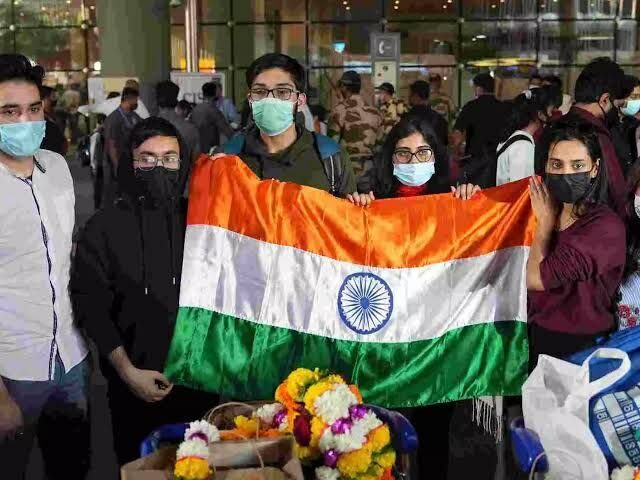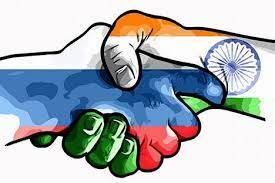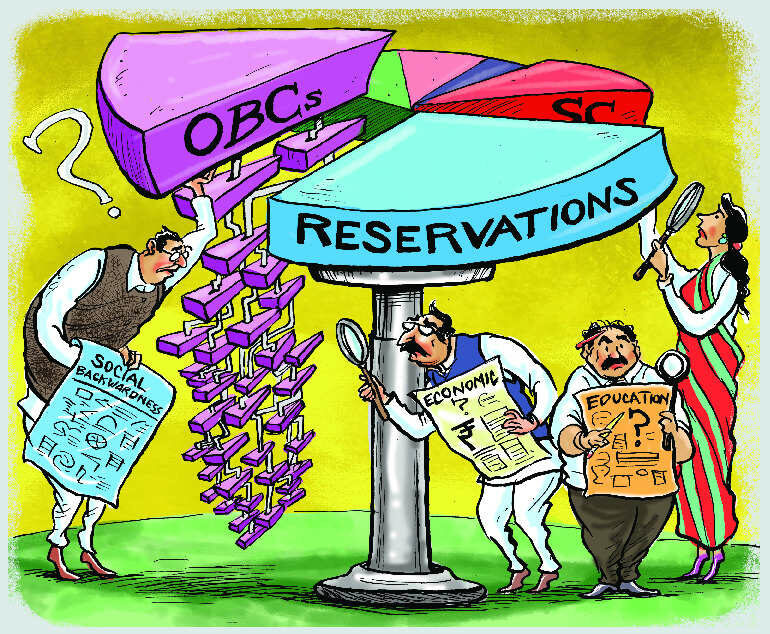SWIFT SANCTIONS ON RUSSIA
WHY IN NEWS?
In response to the invasion of Ukraine, several European countries and the US have imposed economic sanctions on Russia. USA, EU, Canada and many of its allies have removed many Russian banks from SWIFT, an important system of international payments, which has deeply impacted the Russian economy. It is being believed that out of all the sanctions imposed on Russia so far, Russia has been hurt the most due to its removal from the swift system. Previously Iran was also removed from the swift system in the year 2018 there by its economy was hit very hard. Russia largely depends on swift system for exporting oil and gas and because of which its removal from the swift system is being considered as the harshest of all the imposed sanctions.
ABOUT SWIFT
- SWIFT stands for Society for World Wide Interbank Financial Tele communication.
- It is headquartered in Belgium and was conceived in the year 1973 with 239 banks from 15 different countries around the world to specifically address communications about the cross-border payments.
- Later, by the year 1977, swift network go text ended to 518 banks across 22 countries.
- At present, more than 11000 banks across 200 countries are connected with the swift network.
- In the year 2021, on an average, 42 million transactions a day were processed using swift fin messages.
- Russia is being considered as the second biggest user of the network with 300 banks and organisations.
- Swift doesn’t transfer funds rather will transfer message between the financial institutions about where the funds are being
- It neither manages the account on behalf of the individuals or the financial institutions nor hold the funds from third parties.
- It also doesn’t perform any clearing or settlement functions.
- It is being regulated by G-10 central banks from Belgium, Canada, France, Germany, Italy, Japan, The Nether lands, the UK, the US, Switzerland, and Sweden, a long side the European Central Bank.
- SWIFT claims to be neutral. Its share holders, consisting of 3,500 firms across the globe, elect the 25-member board, which is responsible for over sight and management of the company.
PURPOSE OF SWIFT
- In a globalized society, where the international transactions are becoming eminent and at a highest scale, there by requires a safest communication. Thus, swift will provide a safest communication for interbank financial transaction.
- SWIFT will keep a track of payments i.e information about the funds being transferred. This helps the sending institution tell the receiving institution, what account the money is supposed to be end up in. Also, swift will make processing hundreds and thousands of payments per day as easy as possible thereby making the global economy to function smoothly and efficiently.
TELEX
- Old system used before SWIFT was TELEX– Tele printer exchange.
- It is a system developed just before the World War 2 and was one of the original forms of data transmission.
- TELEX communication between the financial institutions were not standardised and it also had a free message format which led to lot of human errors. it also made the processing time quiet long.
- As the cross-border payment volumes increased, then on-standardisation became a drag on the efficiency of telex, thereby led to the birth of SWIFT platform, went live in the year 1977.
- In its 1styear, swift processed over 10 million messages and it very quickly replaced TELEX as the dominant financial messaging system in the world.
- Anyone using the swift network which is a network of over 11000 financial institutions in over 200 countries, now inputs a standardized swift code or Bic codes (bank identifier code) there by lead to the minimization of errors.
WORKING OF SWIFT
- Two member banks of the swift network will be having a nostro and vostro account that they hold jointly.
- Nostro and vostro are 2 Latin words which means our sand yours
- Once swift message is being confirmed, then the sending bank deposits the donors fund into the nostro Vostro account.
- Receiving bank then debits the nostro vostro account and credits the recipient’s bank account with the funds.
WHO USES THE SWIFT?
In the beginning, SWIFT founders designed the network to facilitate communication about Treasury and correspondent transactions only. The robustness of the message format design allowed for the huge scalability through which SWIFT gradually expanded to provide services to the following:
- Broker age institutes and trading houses.
- Securities dealers.
- Asset management companies.
- Clearing houses.
- Corporate business houses.
- Treasury market participants and service providers.
- Individuals or businesses making international wires or money transfers.
- Foreign exchange and money brokers.
OTHER MESSAGING NETWORKS
- SPFS-SYSTEM FOR TRANSFER OF FINANCIAL MESSAGES
- While SWIFT is the most common network for transferring money globally, some countries have built their own messaging networks. For example, SPFS, or the System for Transfer of Financial Messages, is the Russian-equivalent of SWIFT. It was developed in 2014 when countries around the globe threatened to expel Russia from SWIFT due to its annexation of Crimea. It allows for transfer of funds between any two banks on the system.
- CIPS-CROSS BORDER INTERBANK PAYMENT SYSTEM
- China has developed its own messaging network called CIPS. As of 2021, CIPS counted 80 financial institutions as its members, including approximately 23 Russian banks.
- BLOCK CHAIN AND CRYPTO CURRENCY
- While corporate adoption of crypto currency has been limited so far, it does serve as an alternative to SWIFT. The drawbacks of using crypto currency are a very low acceptance rate – very few businesses accept crypto currency as a form of payment and the volatility in the value of crypto currencies.
CUTTING OFF RUSSIA FROM SWIFT
- Removal of Russia from the SWIFT network is considered to be most severe financial sanction that could be levied. This will effectively cripple the ability for the majority of funds to flow In and out of the country.
- Russia had to rely on other ways to process payments which will be extremely cumber some and messy. According to USA, it will make Russia to rely on telephone or fax route to make the payment, which will be difficult and not so safe.
- The suggestion to cut off Russia from SWIFT platform was not new. in fact, on April 29,2021, European parliament passed a non-binding resolution to exclude Russia from Swift network if they invade Ukraine.
- The idea of cutting off Russia from the swift platform was on the cards much before in the year 2014 when they annexed Crimea. On that occasion, the then finance minister of Russia Alexei Kudrin said that it would cause Russian GDP to contract by 5%.
ALTERNATIVE MECHANISMS FOR RUSSIA
The present cut off from swift network will urge Russia to find an alternative channel to process financial transactions
- Russia could use crypto currency or Russia’s own network System for transfer of financial messages (SPFS) – a Russian equivalent of the SWIFT financial transfer system, developed by the Central Bank of Russia. The system has been in development since 2014, when the United States government threatened to disconnect Russia from the SWIFT system. But, SPFS is mainly used by organisations inside the country.
Alternatively, China which is Russia’s biggest trade partner and hence Russia could direct its banks to use the Chinese owned cross border interbank payment system (CIPS). But CIPS possesses enormous limitations such as Rubble needs to get converted in to Yuan.
IMPACT O FCUTTING OF FRUSSIA FROM THE SWIFT PLATFORM
- Financial transaction with foreigners will get stopped.
- If a country is excluded from the most participatory financial facilitating platform, its foreign funding would take a hit, making it entirely reliant on the domestic investors. This is particularly troublesome when institutional investors are seeking new markets in newer territories.
- Also, this would have its own effect on the remittances and the foreigners who are staying in the Russia because those non-resident individuals will not be able to send their remittances to their family living in their home country and vice versa.
- Meeting obligations.
- Russian obligations of any payments or supply of commodities to the other countries and vice versa will get affected because of such sanctions being imposed on Russia. Whatever agreements they signed each other will not be having any validity hence forth.
- Receiving payments for exports.
- The items which Russia already exported now will not be able to get its payments immediately because of the sanctions being imposed.
- On the contrary, whatever imports which Russia had made, they are now not in a position to pay for such imports.
- Inflation in the world market and higher borrowing cost.
- Since, Russia cannot provide short term credit as well as it cannot access dollar asset immediately, exporters will stop their exports to Russia and this will create shortages in the world market and there by creates inflation in the world market.
- Since Russia, because of the sanctions being imposed, cannot borrow money from the foreign countries, hence its transaction will be difficult and even though if borrowing becomes possible, the borrowing cost will be high, there by leading to increase in the inflation.
- This will in turn lead to depreciation (fall in the currency value) of rubble and the debt-GDP ratio will increase. In order to control the inflation, interest rates will get increased.
- Disagreement among the Europe an countries.
- Europe an countries seem to be divided on the Russia’s removal from swift.
- Russia being the major supplier of oil and natural gas to the Europe. in such a situation, if payment option to Russia gets closed, will have an adverse effect on the supply of oil and natural gas.
- On the other hand , it’s not an easy task to find any other alternatives to these essential commodities.
- Countries like Germany, France, Italy has their own challenges which they might have to face due to Russia’s
removal from the swift network.
- China factor
- China always supports Russia. Russia can now move closer to China after being removed from the swift China always desired to end the dominance of western countries like USA in the international market.
- Chinese president Xi Jinping always desires to curtail US dollar dominated global economic structure.
- Russia, being considered as an “all weather friend of India “and hence its growing closeness with China will be
a concern for India.
CONCLUSION
Countries that opposed in cutting off Russia from swift basically argue that USA, Canada and EU can do enough economic damage through other financial sanctions. While others were of the opinion that maximum needs to be done right away to have the best chance of pressurizing Russia to end the brutal invasion. India might face interruption and delay in arms import with Russia because of the sanctions. However, there is some relief for India and Russia as their bilateral payments are made in Indian Rupee and sometimes in other currencies like Euro for both imports and exports. So, sanctions may not have a huge impact on the payments.
PRACTICE QUESTION
Discuss the significance of SWIFT and the possible implications of SWIFT in the global economy.
(150 Words, 10 Marks)










